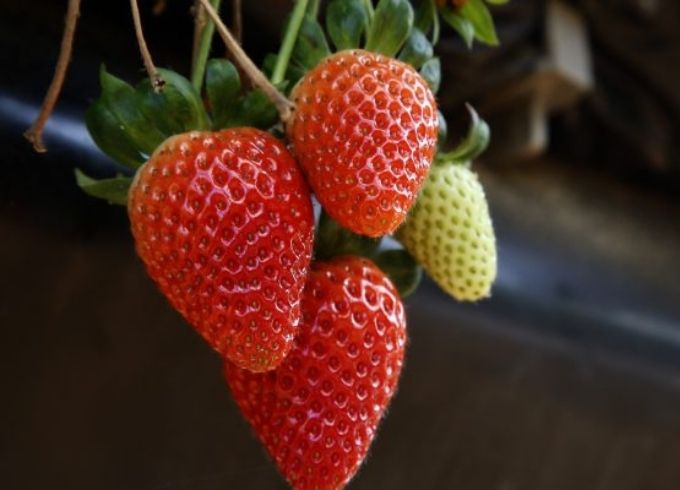Eye on Asia: Making every drop count in the growing juices market

Across the Asia-Pacific (APAC) region, a growing number of consumers are putting down their sugary, carbonated cans in search of ‘better-for-me’ beverages – and juices are helping to quench this thirst. This demand is fueling considerable expansion – the market size for juices in the region is estimated at $33.1 billion USD and expected to grow at a CAGR of 4.67% to reach $43.5 billion USD by 2030.[1] Concentrates, in particular, are poised to witness the highest growth of all juice ingredients, with a projected CAGR of 5.20% during 2024-2030.[2]
The transition from sodas to more functional, value-added juices reflects a profound change in consumer attitudes towards healthy, clean-label products and novel taste experiences. Here, we take a closer look at how juice manufacturers can tap into this trend, and taste success in one of the juiciest segments in the beverages market.
Riding the health and wellness wave
One of the primary driving forces behind the surge in juice consumption is increasing health consciousness amongst consumers. For example, in 2022, roughly 55% of Chinese consumers upheld a healthy lifestyle, with close to 32% of individuals opting for health-oriented products, including healthy juice, to improve their wellbeing.[3]
Juices offer a fresh, functional – and fast – way to hydrate. Their combination of natural goodness and sweetness means that they can pack a flavoursome punch while delivering wholesome nutritional benefits. By incorporating red fruit juice ingredients such as strawberries, raspberries, and blackcurrants, for example, manufacturers can boost the ‘health halo’ of their products. These fruits are rich in powerful antioxidants like anthocyanins and vitamin C, which contribute to overall wellbeing. Additionally, they add a burst of vibrant colour and delicious flavour, making juices even more enticing and enjoyable.
And juices are also becoming more attractive with those bought-in to ‘beauty from within’. Japan, with its reputation for trendspotting and innovation, is leading the charge for juice concentrates, thanks in part to the growing popularity of ‘fruit-charged’ beauty drinks, which are increasingly lauded for improving appearance.[4]
Catering to demand for clean-label confidence
In addition to health considerations, consumers in the APAC market are showing a strong preference for clean-label products. This is reflective of a general movement towards food and beverages made with naturalness and authenticity in mind. For example, 40% of Indian adults cite ‘no artificial ingredients’ as the most important factor when buying juice and juice drinks.[5]
Consumers are also gravitating towards brands that prioritise sustainability, from ethically grown produce to eco-friendly production processes and packaging. The demand for transparency and simplicity in product formulations is reshaping the beverage industry landscape, with juice brands that favour purity, quality, environmental integrity and short (but sweet) ingredients lists gaining ground.
Fusing cultural influences with innovative flavours
Another factor contributing to the popularity of juices is the desire for novel taste experiences, which is unsurprising given the region’s rich diversity of culinary traditions and flavour varieties. A recent Mintel ‘Sense of the Intense’ report uncovered how an urge for new experiences is driving adventurous consumers toward juices that engage various senses ranging from taste, smell, looks and sound.[6]
As a result, there is an increasing desire for unique and exotic combinations that tantalise the taste buds and stimulate the senses, from a tropical mango twist to the sour tang of cherry. That being said, traditional tastes still have their place, such as strawberry – which is so popular in Japan that there is a dedicated Strawberry Day on January 15th every year. At the same time, other red fruit juice ingredients are still perceived as novel and rare flavors in the APAC region. So, by incorporating fruit like raspberries and blackcurrants, juice manufacturers can infuse their products with a sense of innovation and intrigue.
Sip success with SVZ
Driven by health consciousness, clean-label preferences and a quest for novel taste experiences, juices have emerged not just as an alternative to carbonated soft drinks full of added sugar, but a dietary staple in their own right.
In a region where taste preferences are as diverse as the cultures that shape them, juice manufacturers have an opportunity not only to meet but exceed consumer expectations. By placing emphasis on natural juice ingredients and innovative flavours, such as red fruit ingredients, they can carve out a niche in this vibrant and dynamic market to jump on the juice brand-wagon and squeeze every last drop from this fruitful opportunity.
For more information about our extensive range of juice ingredients, click here.
[1] Asia-Pacific Juices Market SIZE & SHARE ANALYSIS – GROWTH TRENDS & FORECASTS UP TO 2030 Source: https://www.mordorintelligence.com/industry-reports/asia-pacific-juices-market
[2] Ibid
[3] Ibid
[4] Ibid
[5] IPSOS Observer/Mintel, June 2021
[6] Dynata/Mintel, July 2022


